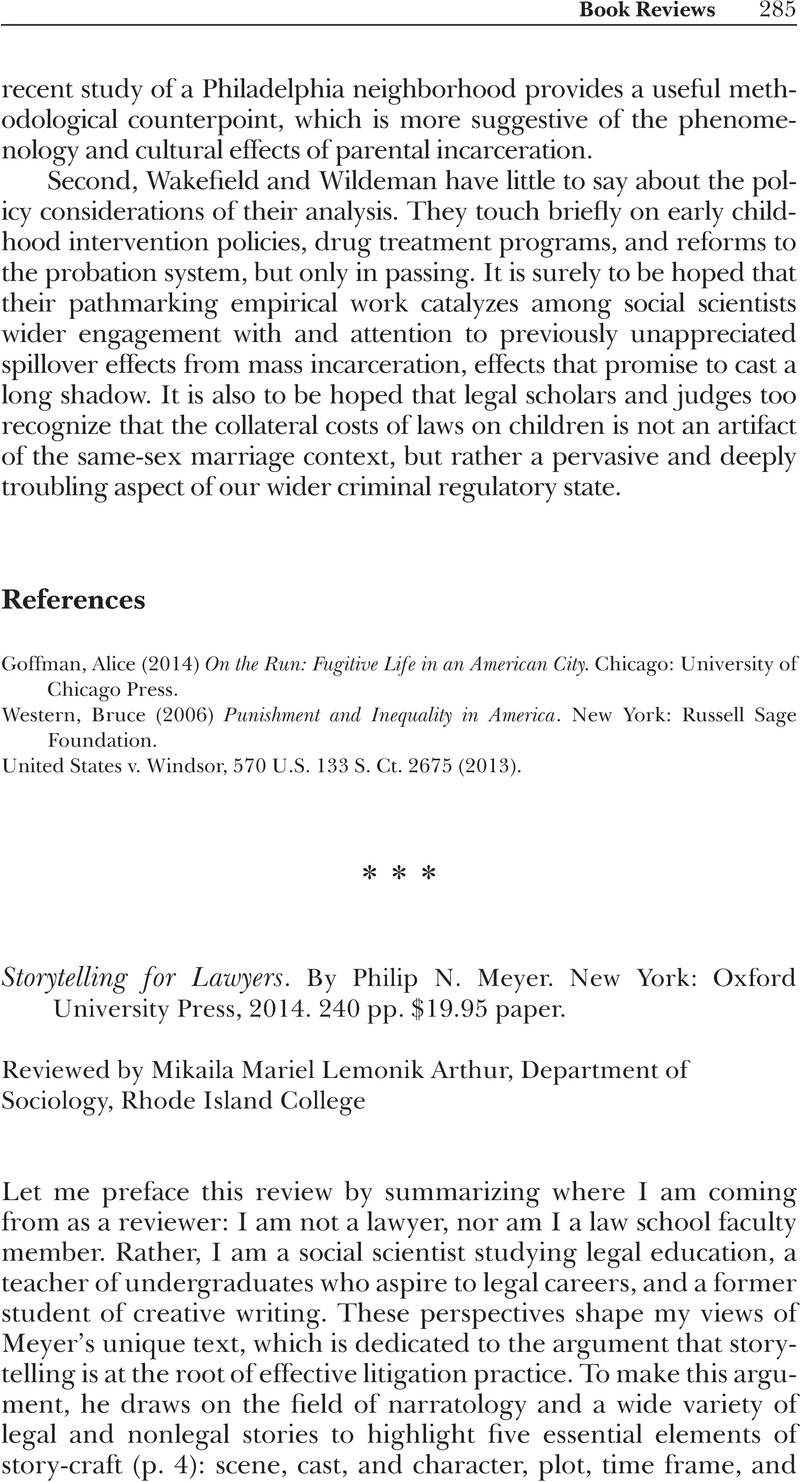No CrossRef data available.
Article contents
Storytelling for Lawyers. By Philip N. Meyer. New York: Oxford University Press, 2014. 240 pp. $19.95 paper.
Review products
Storytelling for Lawyers. By Philip N. Meyer. New York: Oxford University Press, 2014. 240 pp. $19.95 paper.
Published online by Cambridge University Press: 01 January 2024
Abstract
An abstract is not available for this content so a preview has been provided. Please use the Get access link above for information on how to access this content.

- Type
- Book Reviews
- Information
- Copyright
- © 2015 Law and Society Association.
References
Malcolm, Janet (2011) Ipigenia in Forest Hills: Anatomy of a Murder Trial. New Haven: Yale University Press.Google Scholar


